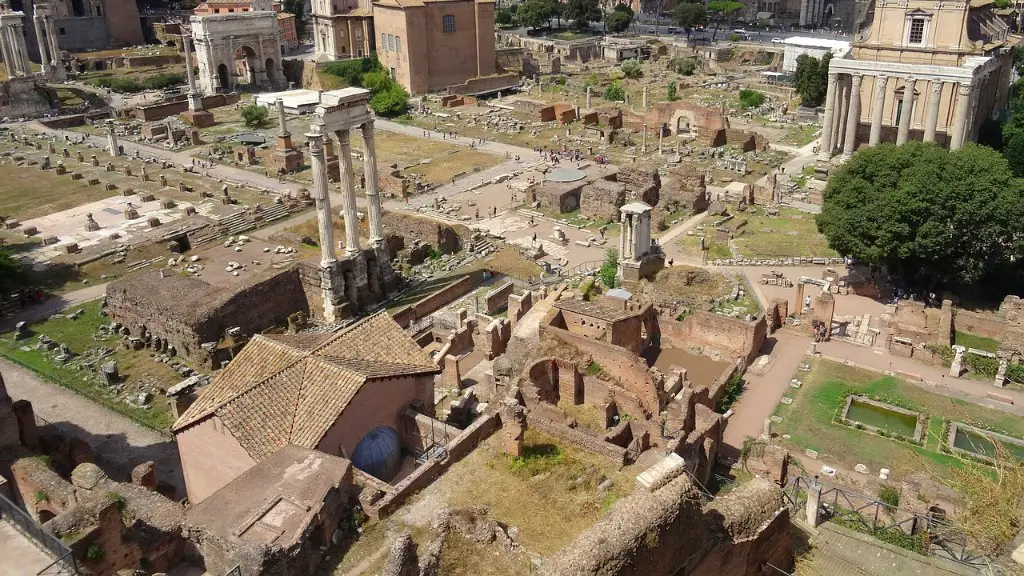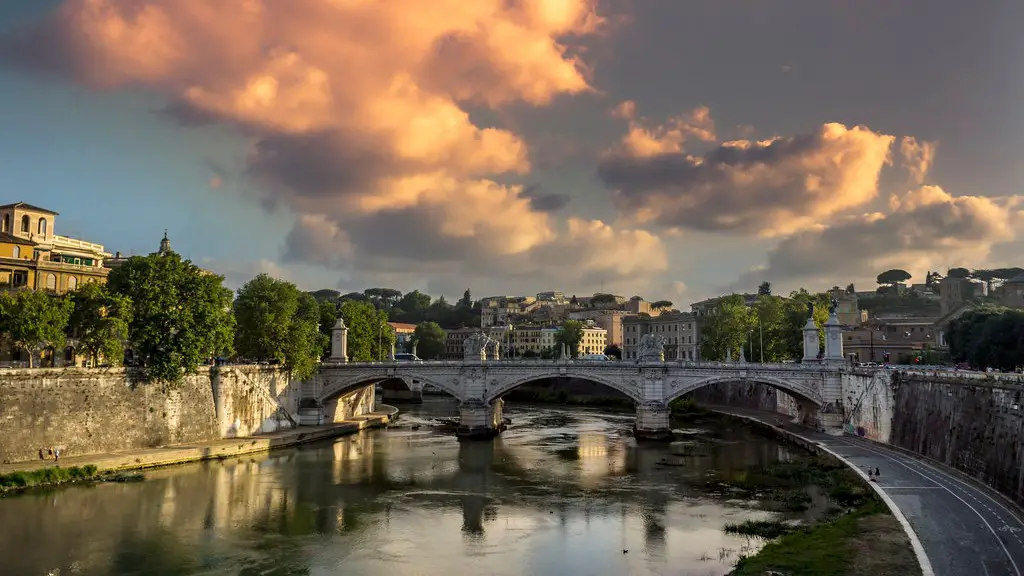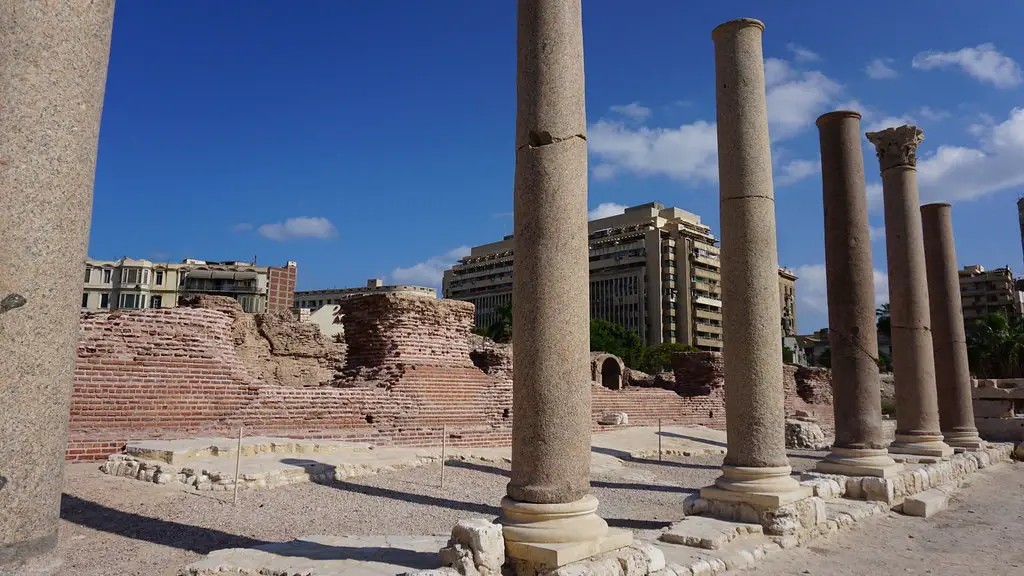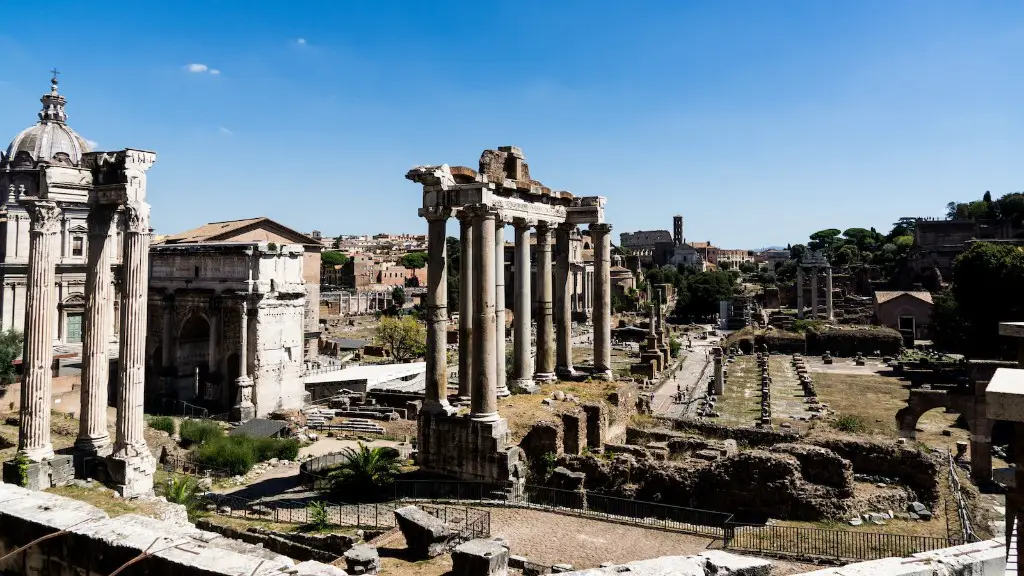Introduction
The social hierarchy in Ancient Rome was as complex as the civilization itself and it is important to understand this in order to gain an understanding of the Roman Empire. Ancient Rome is known for its rigorous social stratification and deep-rooted class divisions. In this article, the social structure of Ancient Rome will be explored. This will include how the ancient Roman society was divided by classes, how people were ranked within the social hierarchy, what rights people had depending on their position in society and how the social structure impacted the political system.
Overview of the Social Structure
Ancient Rome was primarily divided into two distinct classes; the patricians, which included wealthy and well-connected citizens, and the plebeians, composed of ordinary working people. In addition to the patricians and plebeians, the Roman social structure also included freed slaves and foreigners, known as peregrini. The system was very much based on wealth and status and was represented in the Senate and other positions of power. The most powerful members of society were from the aristocracy and held the most influence in politics.
Patricians
The Patricians were the highest and most privileged class in Roman society and included wealthy senators, aristocrats and members of the imperial family. They had exclusive rights not enjoyed by other classes, such as the right to vote, hold public office and obtain certain religious privileges. They could also buy and sell land which was off-limits to the lower classes. These exclusive privileges were one of the ways they maintained their power and status in Roman society.
Plebeians
In contrast to the Patricians, the Plebeians were the lower class of Ancient Rome, including working class people, such as craftsmen, farmers, labourers and traders. They possessed fewer rights than the Patricians but still had a say in some political matters. Plebeians could participate in elections for lower-level public office, such as local magistrate, but were excluded from higher offices.
Rights of the Lower Classes
Although the Patricians held exclusive rights, the lower classes were still afforded some rights. Plebeians and freed slaves were allowed to take out their own legal cases and their testimony was considered to be of equal value to others in court. They could also borrow and repay money, own property and arrange marriages. This allowed the lower classes to gain some measure of financial security.
Impact of the Social System on Politics
The social hierarchy in Ancient Rome had a considerable impact on the political system. The Patricians held a monopoly on political power and most people in positions of power were from the aristocracy. Patricians were often granted political office and appointments to public posts, whilst the lower classes had no access to upper-level positions.
Social Mobility
The rigid class structure of Ancient Rome did, however, allow for some social mobility. Wealthy freed slaves were able to purchase their way into the Patrician class, and it was not uncommon for plebeians to rise to positions of wealth and influence through marriage, military service or business ventures. High-ranking military officers and successful government officials could also advance their social standing. This enabled people to move up the social ladder and gain access to higher levels of privilege.
Religion and the Social Hierarchy
Religion played a major role in Roman society and was closely intertwined with the social hierarchy. Certain religious ceremonies and rituals were only accessible to the upper classes, while the lower classes were excluded from practicing certain aspects of the religion. This further strengthened the divide between the classes, as upper class citizens were able to partake in exclusive religious privileges.
Legacy of the Social System
The social hierarchy of Ancient Rome is one of the most iconic aspects of the civilization and its impact can still be seen today. This can be seen in the way social status still shapes politics and how access to privileges depend on a person’s wealth and influence. The legacy of the Roman social hierarchy is an important reminder of how social structures can shape the way a society is organized.
Education in the Social Structure
Education was essential for success in Ancient Rome and, like other aspects of the Roman hierarchy, it was heavily stratified. The Patricians enjoyed exclusive access to the best schools and had access to tutors who taught them the art of rhetoric and the laws of the Republic. The Plebeians, however, were not afforded the same level of education and, as such, had limited opportunities for higher educational attainment.
Attitudes Regarding Slavery
Attitudes towards slavery varied in Ancient Rome, depending on the class of the slave owner. Patricians embraced slavery as a way to make their households more efficient, whereas the lower classes saw it as a necessary evil. Some argued that it was a form of economic oppression and were even willing to fight for the abolition of slavery. In the end, slavery in Rome was not abolished, but it did become increasingly regulated.
Conclusion
The social hierarchy in Ancient Rome was a complex system that shaped the way the Roman civilization was organized. It was characterized by a rigid class structure with the Patricians holding the most privilege. This system had a large impact on the political system and education, as well as attitudes towards slavery. Its legacy is still seen today and serves as an important reminder of the power of social structures.



